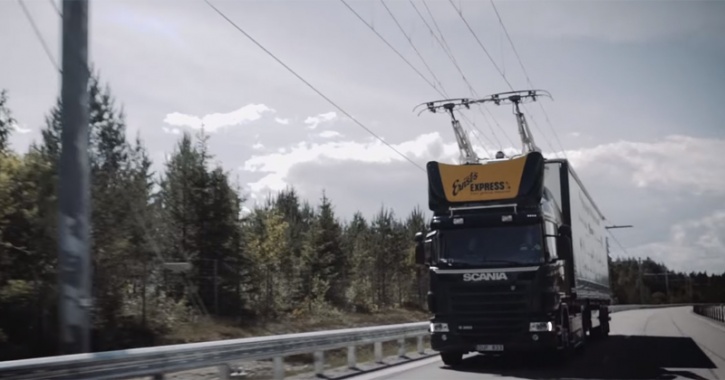Sweden opens 1.2 mile long electric highway for trucks
Two programs have begun, the first involving overhead powerlines that feed 750 volts DC into a hybrid system on the truck, much like how electric trains work.
Sweden on Wednesday inaugurated a test stretch of an electric road, one of the first in the world to do that. The lines are supplied by Siemens and the trucks, which are fitted with hybrid electric diesel motors, are made by Scania. Siemens said the trucks developed for the project are “twice as efficient” as conventional engines. However, this new system, reports Gas2, uses advanced sensors that can connect and disconnect the wires at up to 55 miles per hour.
The electric road system, which is similar to a light rail, allows trucks to run on electric power while on the unique road, and then on regular roads they operate as hybrid vehicles. In this case, though, the electricity is fed back into the power lines and the larger energy system, enabling it to help power other trucks. Each truck contains a pantograph (also known as a current collector, it is a device mounted on the roof of the truck to collect power through contact with an overhead catenary wire) which can be managed automatically or manually via the driver. Apparently, transport accounts for more than one third of Sweden’s Carbon dioxide emissions, nearly half of which comes from freight transport. The experiment is based on the governments goal of energy efficiency and a fossil fuel-free vehicle fleet by 2030, and will contribute to strengthening Swedens competitiveness.
“By far the greatest part of the goods transported in Sweden goes on the road, but only a limited part of the goods can be moved to other traffic types”, noted Andres Berntsson, chief strategist at Sweden Transport Administration. “Electric roads offer this possibility and are an excellent complement to the transport system”.
Siemens is also developing an eHighway demonstration project in California; in partnership with Volvo, testing will run through 2017. The eastbound railroad parallel to the eHighway is already at capacity, so the way is described as the electric lane as a “flexible railroad” by Ernström. “The system makes it possible to reduce the use of fossil fuels and truck operating costs, at the same time eliminating local emissions”.








